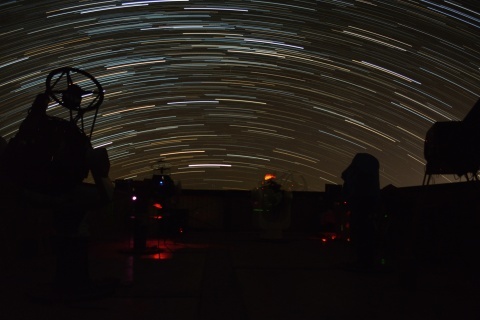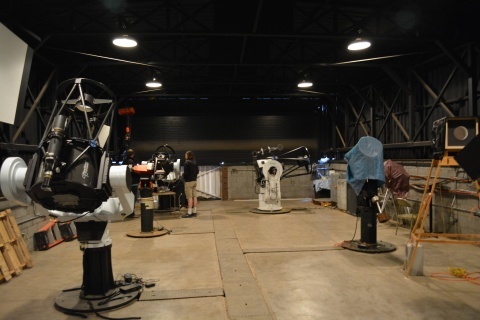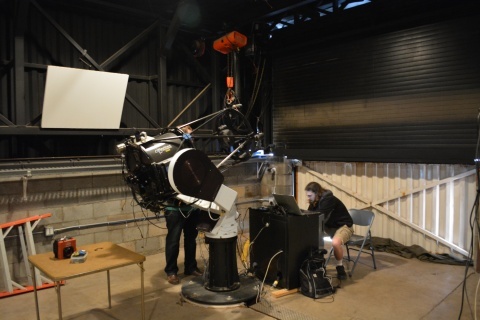
The Iowa Robotic Observatory (IRO) telescope is about 1,500 miles from the University of Iowa campus, under the dark night skies of southern Arizona.
“It feels like the middle of nowhere, just a few miles from the Mexico border,” says Spencer Wikert, an Extended Technical Support consultant who works with the Department of Physics and Astronomy (as well as the Department of Biology).
In February, Wikert joined a four-person team on a six-day trip to the IRO. His main goal: Upgrade the facility’s computers and make them easier to manage from a distance.

“The old computers were essentially unmanaged,” Wikert says. “We shipped new systems to the IRO and, once on site, got them up and running, including setting up SCCM.”
Short for System Center Configuration Manager, SCCM automates updates, tracks assets, and facilitates deployment of new software. It’s especially helpful for supporting a facility that sees just a handful of visits from UI personnel each year.
Among the first telescopes of its kind
The IRO is one of six telescopes at the Winer Observatory, a nonprofit facility near Sonoita, Arizona. It complements the Van Allen Observatory (VAO) atop Van Allen Hall.
“The two telescopes are kind of one unit,” says Robert Mutel, professor of physics and astronomy and principal investigator for the observatories. “The VAO provides hands-on access for students, but to do real research you need much darker skies.”
Established in 1997, the IRO was one of the world’s first robotic telescopes designed for instructional use. As the name implies, it can make astronomical observations without manual human guidance.

In 2015, with support from the Carver Charitable Trust, Mutel and his team installed a new and improved telescope at the IRO. They dubbed the system Gemini to acknowledge its connection to a “twin” in Iowa City.
Wikert has supported physics and astronomy for about two and half years. Adding the department to his portfolio was a “happy coincidence,” as he put it.
“I’ve been interested in telescopes and doing amateur astronomy for a long time,” he says. “At the IRO, I got to help swap out the camera and recalibrate the system.”
Support for space science pioneers
Iowa’s pioneering work in space science means that Wikert and colleagues support not just commercial software and classroom systems, but also new tools developed by UI research teams.
“We help get a lot of in-house instrumentation up and running on computers,” he says. They also ensure that maintenance routines don’t disrupt research operations.
In IRO’s case, that required creating a special maintenance window. “For most computers on campus, maintenance happens in the middle of the night,” Wikert says, “but that’s when observatory computers are most active.”
He and colleagues continue to fine tune routines for IRO systems to protect valuable data and sensitive hardware. “With instrument-host computers, there’s some give and take between security and functionality,” Wikert says.
Unmatched opportunities for students
The on-site IT work is complete for now, but Mutel foresees a return trip to the IRO to test a new grism spectrometer built for the telescope with help from students.
The chance to create new instruments and use them in research—including projects that have yielded peer-reviewed, first-author papers by UI undergrads—sets Iowa apart.
“Hundreds of students in all our undergraduate labs use these facilities,” Mutel says. “We’re one of the only universities in the world where beginning undergraduates have access to such sophisticated telescopes.”